Calculation Model of Mechanical and Sealing Properties of NiTi Alloy Corrugated Gaskets under Shape Memory Effect and Hyperelastic Coupling: Two Sealing Properties
Abstract
:1. Introduction
2. Materials and Methods
2.1. Theoretical Model
2.2. Leakage Rate Simulation Method Based on Fluid–Structure Interaction with Real Gasket Sealing Surface Morphology
3. Results and Discussion
3.1. Influence of Gasket Stress on Sealing Performance
3.2. Influence of Medium Internal Pressure on Sealing Performance
3.3. Influence of Roughness on Sealing Performance
3.4. Prediction Model for Leakage Rate of NiTi Alloy Corrugated Gaskets
4. Conclusions
- (1)
- With the increase of loading displacement, NiTi shape memory effect is fully exerted. This causes the contact stress of the sealing surface to show a nonlinear increase. The gasket leakage rate gradually decreases. When the loading displacement is 8 μm, the NiTi alloy corrugated gasket has good sealing performance.
- (2)
- The leakage rate of the NiTi alloy corrugated gasket is positively correlated with the internal pressure of the medium and the roughness of the sealing surface. The greater the internal pressure of the medium and the greater the surface roughness, the greater the leakage rate.
- (3)
- The prediction model of the NiTi alloy corrugated gasket leakage rate was established. The average error was 16.81% compared with the finite element simulation results.
Author Contributions
Funding
Institutional Review Board Statement
Informed Consent Statement
Data Availability Statement
Conflicts of Interest
References
- Wang, P.P.; Zhang, L.; Wang, L.Q. Influence of Temperature on the Bolt Loads and Variation in a Bolted Flange for Subsea Pipeline Connection. Math. Probl. Eng. 2021, 2021, 5636941. [Google Scholar] [CrossRef]
- Aljuboury, M.; Rizvi, M.J.; Grove, S.; Cullen, R. Manufacturing and development of a bolted GFRP flange joint for oil and gas applications, P.I. Mech. Eng. B J. Eng. 2021, 235, 1507–1517. [Google Scholar]
- Lu, X.; Wang, C.; Li, G.; Liu, Y.; Zhu, X.; Tu, S. The Mechanical Behavior and Martensitic Transformation of Porous NiTi Alloys Based on Geometrical Reconstruction. Int. J. Appl. Mech. 2017, 9, 1750038. [Google Scholar] [CrossRef]
- Deltombe, R.; Bigerelle, M.; Jourani, A. Analysis of the effects of different machining processes on sealing using multiscale topography. Surf. Topogr. Metrol. Prop. 2016, 4, 015003. [Google Scholar] [CrossRef]
- Putignano, C.; Afferrante, L.; Carbone, G.; Demelio, G.P. A multiscale analysis of elastic contacts and percolation threshold for numerically generated and real rough surfaces. Tribol. Int. 2013, 64, 148–154. [Google Scholar] [CrossRef]
- Okada, H.; Itoh, T.; Suga, T. The influence of surface profiles on leakage in room temperature seal-bonding. Sens. Actuators A Phys. 2008, 144, 124–129. [Google Scholar] [CrossRef]
- Robbe-Valloire, F.; Prat, M. A model for face-turned surface microgeometry: Application to the analysis of metallic static seals. Wear 2008, 264, 980–989. [Google Scholar] [CrossRef]
- Aljuboury, M.; Rizvi, J.; Grove, S. A numerical investigation of the sealing performance and the strength of a raised face metallic bolted flange joint. Int. J. Pres. Ves. Pip. 2020, 189, 104255. [Google Scholar] [CrossRef]
- Aljuboury, M.; Rizvi, M.J.; Grove, S. Bolted fibre-reinforced polymer flange joints for pipelines: A review of current practice and future challenges, P.I. Mech. Eng. L J. Mst. 2019, 233, 1698–1717. [Google Scholar] [CrossRef]
- Aljuboury, M.; Rizve, M.J.; Grove, S.; Cullen, R. A numerical investigation of the sealing performance of a bolted GFRP flange joint with rubber gasket. In Proceedings of the Eleventh International Conference on Composite Science and Technology, ICCST/11, Sharjah, United Arab Emirates, 4–6 April 2017. [Google Scholar]
- Aljuboury, M.; Rizve, M.J.; Grove, S.; Cullen, R. Bolted flange joint made of glass fibre reinforced polymer (GFRP) for oil and s pipelines. In Proceedings of the ASME 2018 Pressure Vessels and Piping Conference (PVP2018), Prague, Czech Republic, 15–20 July 2018. [Google Scholar]
- Aljuboury, M.; Rizve, M.J.; Grove, S.; Cullen, R. Manufacturing glass fibre reinforced polymer (GFRP) bolted flange connections by using a vacuum infusion process. In Proceedings of the Eleventh International Conference on Composite Science and Technology, ICCST/11, Sharjah, United Arab Emirates, 4–6 April 2017. [Google Scholar]
- Aljuboury, M.; Rizve, M.J.; Grove, S.; Cullen, R. Stress Analysis of Bolted FRP Flange Connections under Internal Pressure. In Proceedings of the 5th PRIMaRE Conference, Bristol, UK, 5–6 July 2018. [Google Scholar]
- Aljuboury, M.; Rizve, M.J.; Grove, S.; Cullen, R. Development of manufacturing a bolted flange joint from glass fibre braid reinforced polymer using a vacuum infusion process (VIP). In Proceedings of the International Conference on Manufacturing of Advanced Composites (ICMAC 2018), Nottingham, UK, 10–12 July 2018. [Google Scholar]
- Yu, Q.P.; Sun, J.J.; Ma, C.B. A Percolation Method of Leakage Calculation and Prediction Within the Mechanical Seal Interface. J. Tribol. 2019, 141, 122203. [Google Scholar] [CrossRef]
- Sun, J.J.; Ma, C.B.; Lu, J.H. A leakage channel model for sealing interface of mechanical face seals based on percolation theory. Tribol. Int. 2018, 118, 108–119. [Google Scholar]
- Ni, X.Y.; Ma, C.B.; Sun, J.J. A Leakage Model of Contact Mechanical Seals Based on the Fractal Theory of Porous Medium. Coatings 2020, 11, 20. [Google Scholar] [CrossRef]
- Haruyama, S.; Nurhadiyanto, D.; Choiron, M.A. Influence of surface roughness on leakage of new metal gasket. Int. J. Press. Ves. Pip. 2013, 111, 146–154. [Google Scholar] [CrossRef]
- Ma, B.B.; Fan, J.; Sun, Z. Leakage analysis of bolted flange joints considering surface roughness: A theoretical model, P.I. Mech. Eng. E J. Process 2018, 232, 203–233. [Google Scholar] [CrossRef]
- Ji, Z.; Sun, J.; Lu, J. Predicting Method for Static Leakage of Contacting Mechanical Seals Interface Based on Percolation Theory. Tribology 2017, 37, 734–742. [Google Scholar]
- Huang, X.; Yao, B.; Xu, G. Research on leakage of metallic gasket based on fractal porous seepage. J. Huazhong Univ. Sci. Technol. (Nat. Sci. Ed.) 2016, 44, 1–5. [Google Scholar]
- Zheng, Q.; Xu, J.; Yang, B. A fractal model for gaseous leak rates through contact surfaces under non-isothermal condition. Appl. Therm. Eng. 2013, 52, 54–61. [Google Scholar] [CrossRef]
- Peng, C.; Fischer, F.J.; Schmitz, K. Comparative Analysis of Leakage Calculations for Metallic Seals of Ball-Seat Valves Using the Multi-Asperity Model and the Magnification-Based Model. Tribol. Int. 2021, 163, 107130. [Google Scholar] [CrossRef]
- He, L.; Lu, X.; Zhu, X.; Chen, Q. Influence of Structural Parameters of Shape Memory Alloy Corrugated Gaskets on the Contact Pressure of Bolted Flange Joints. Adv. Mater. Sci. Eng. 2021, 2021, 5552569. [Google Scholar] [CrossRef]

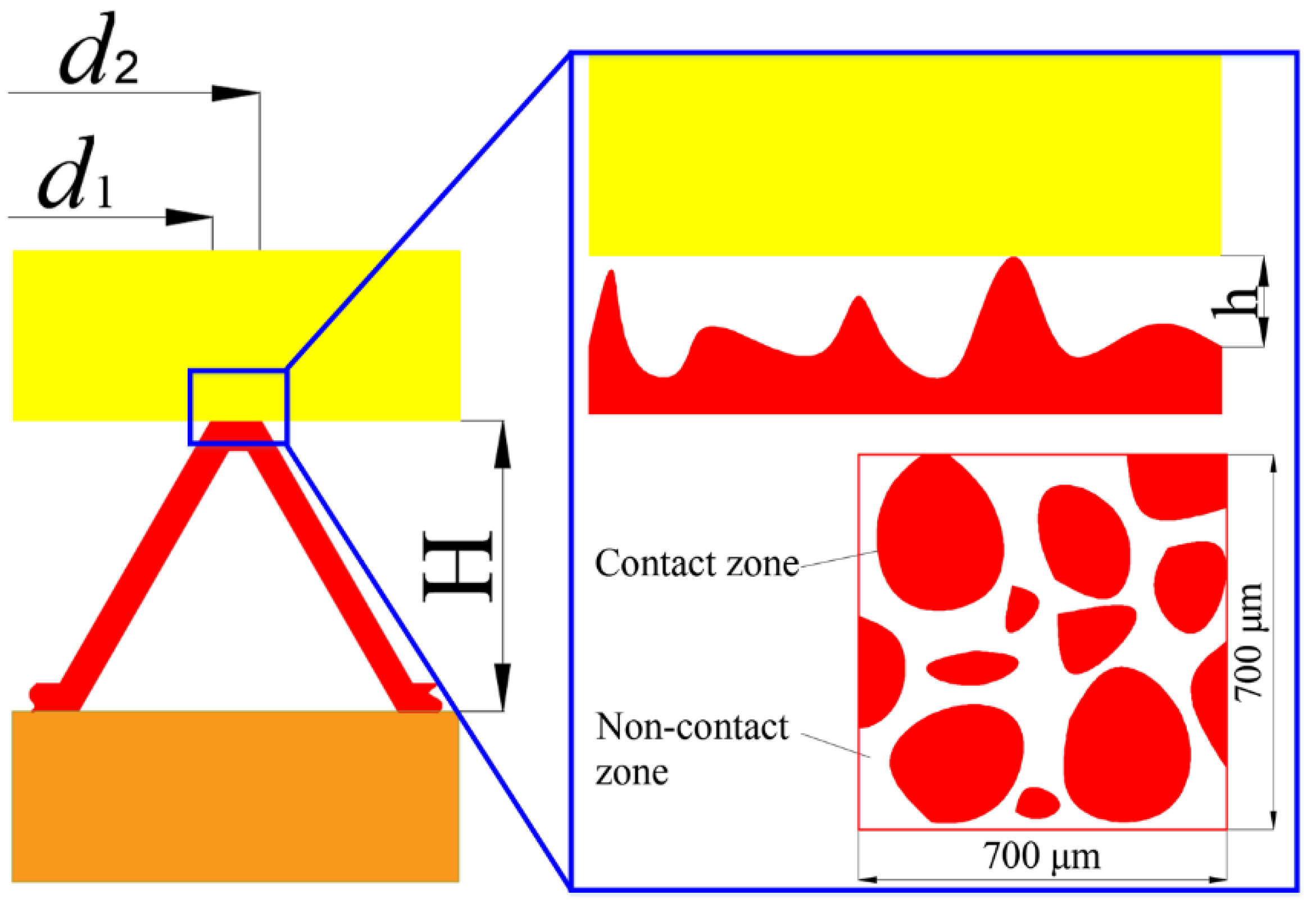
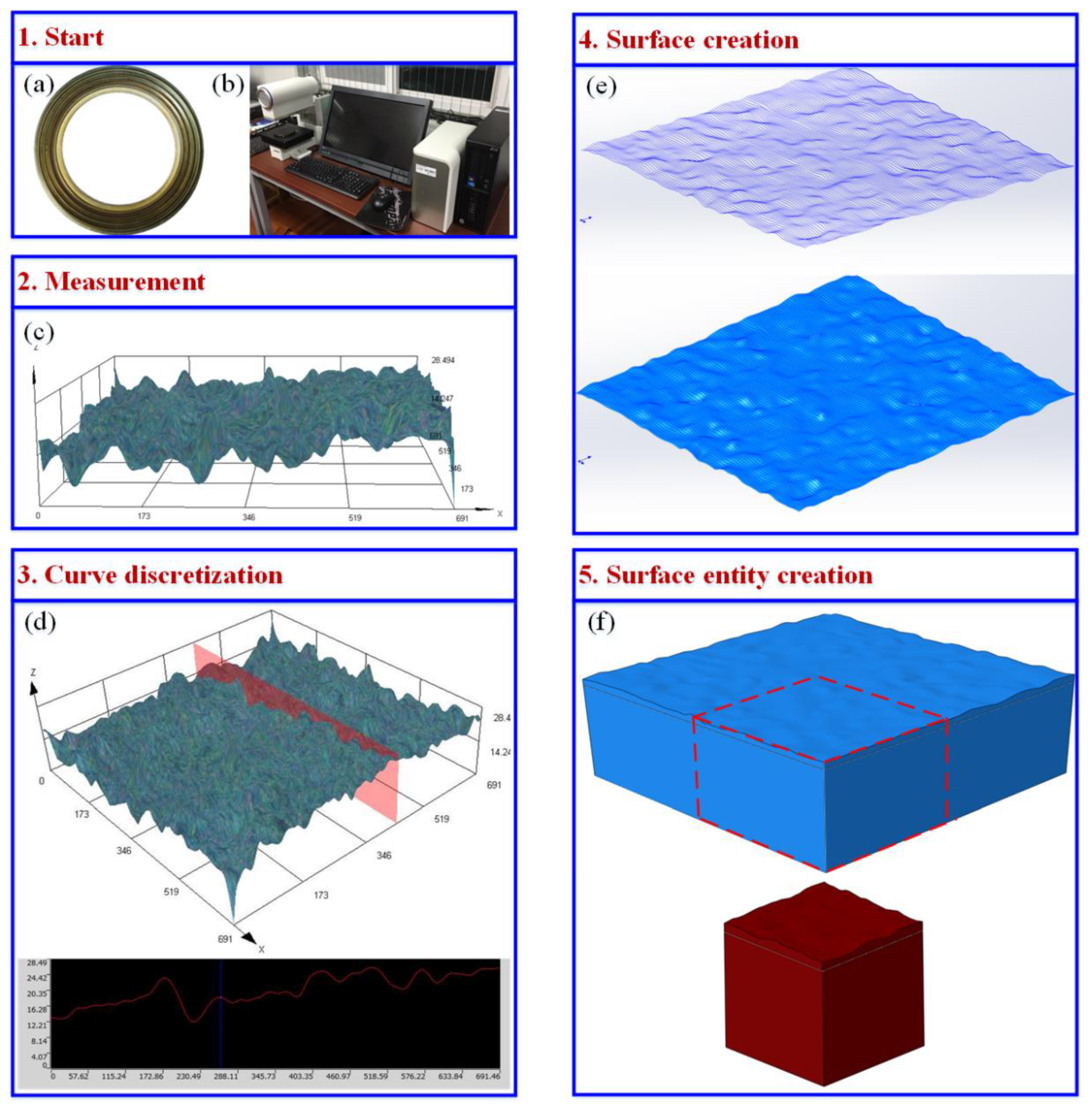
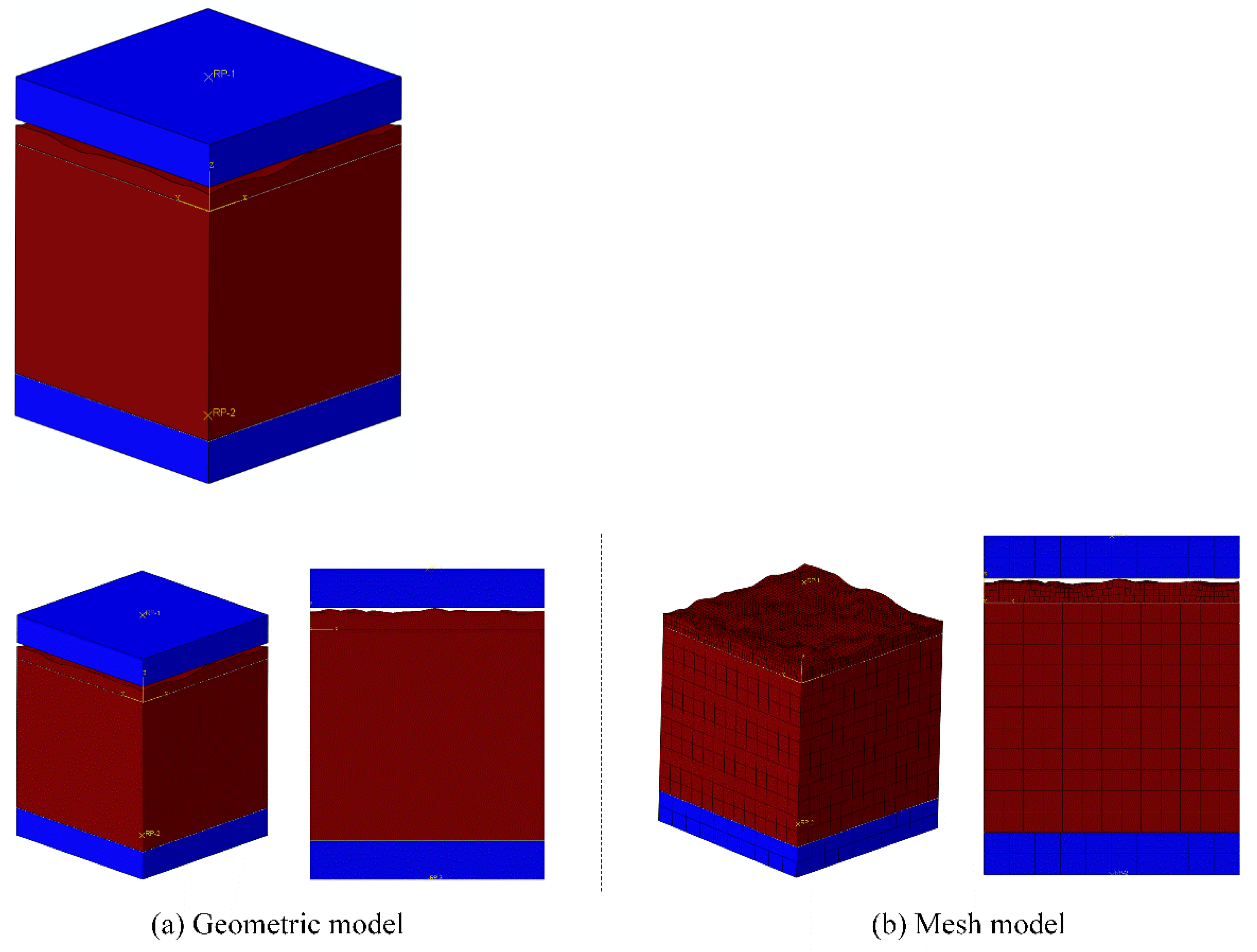


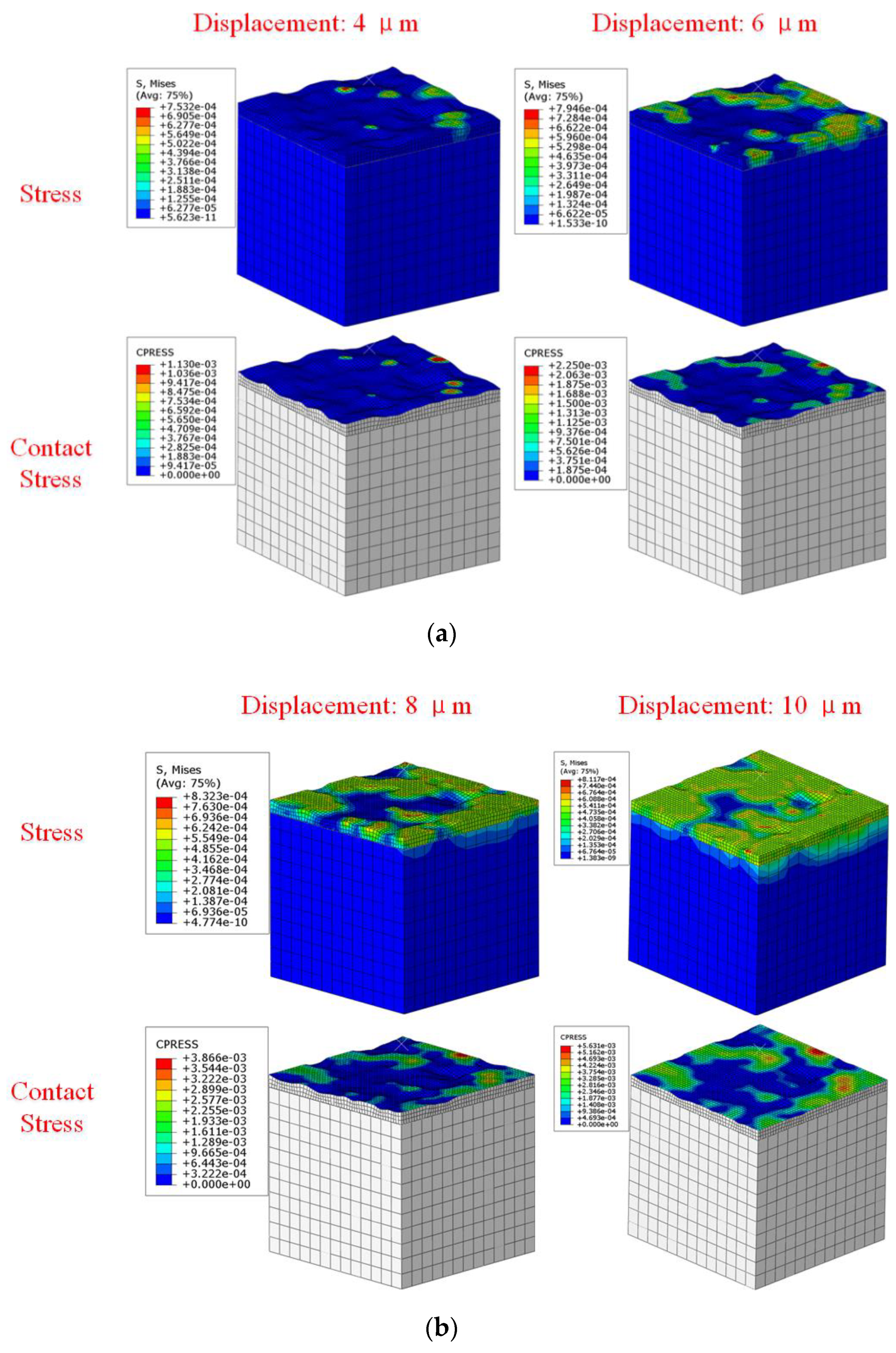

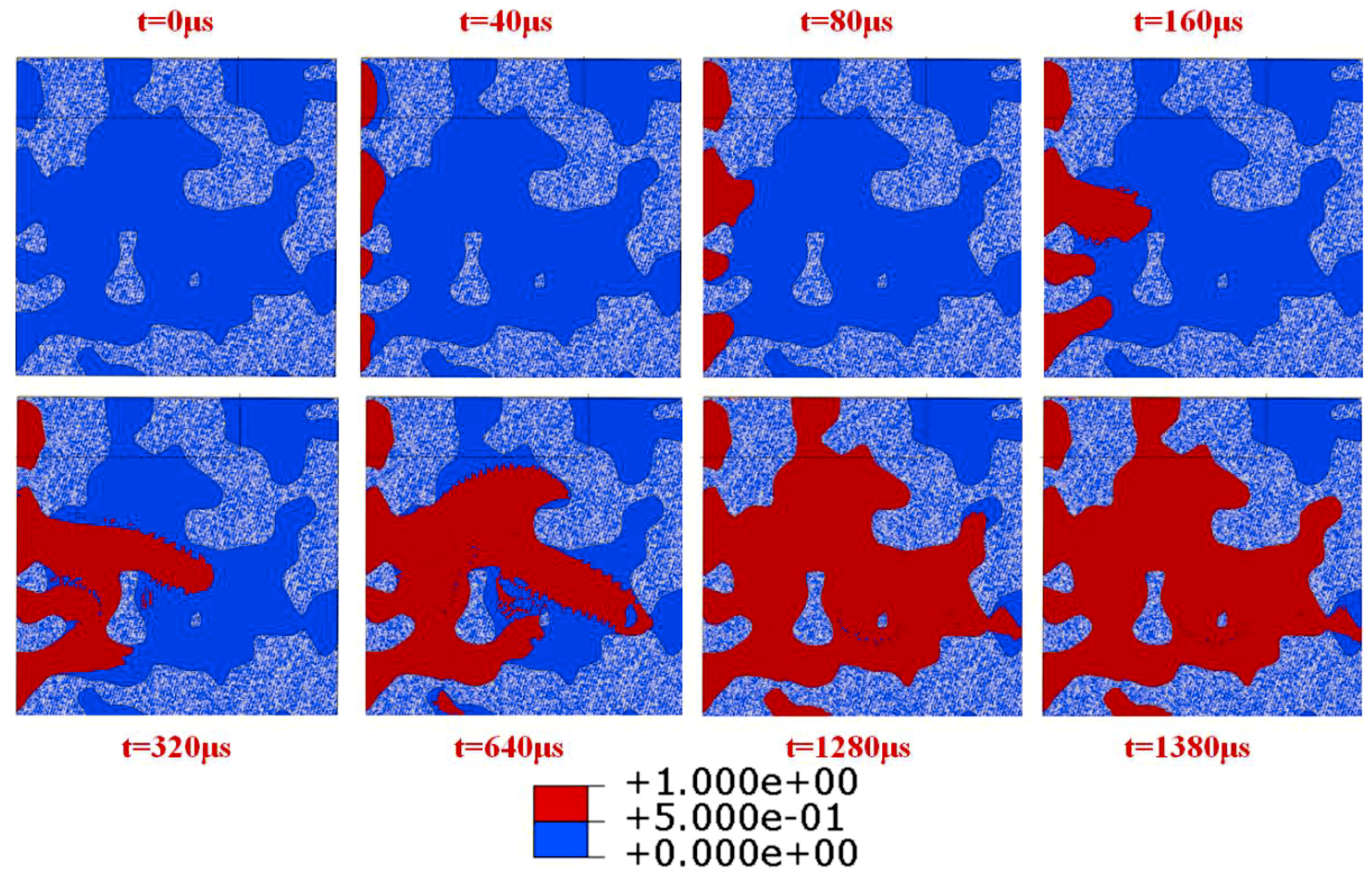

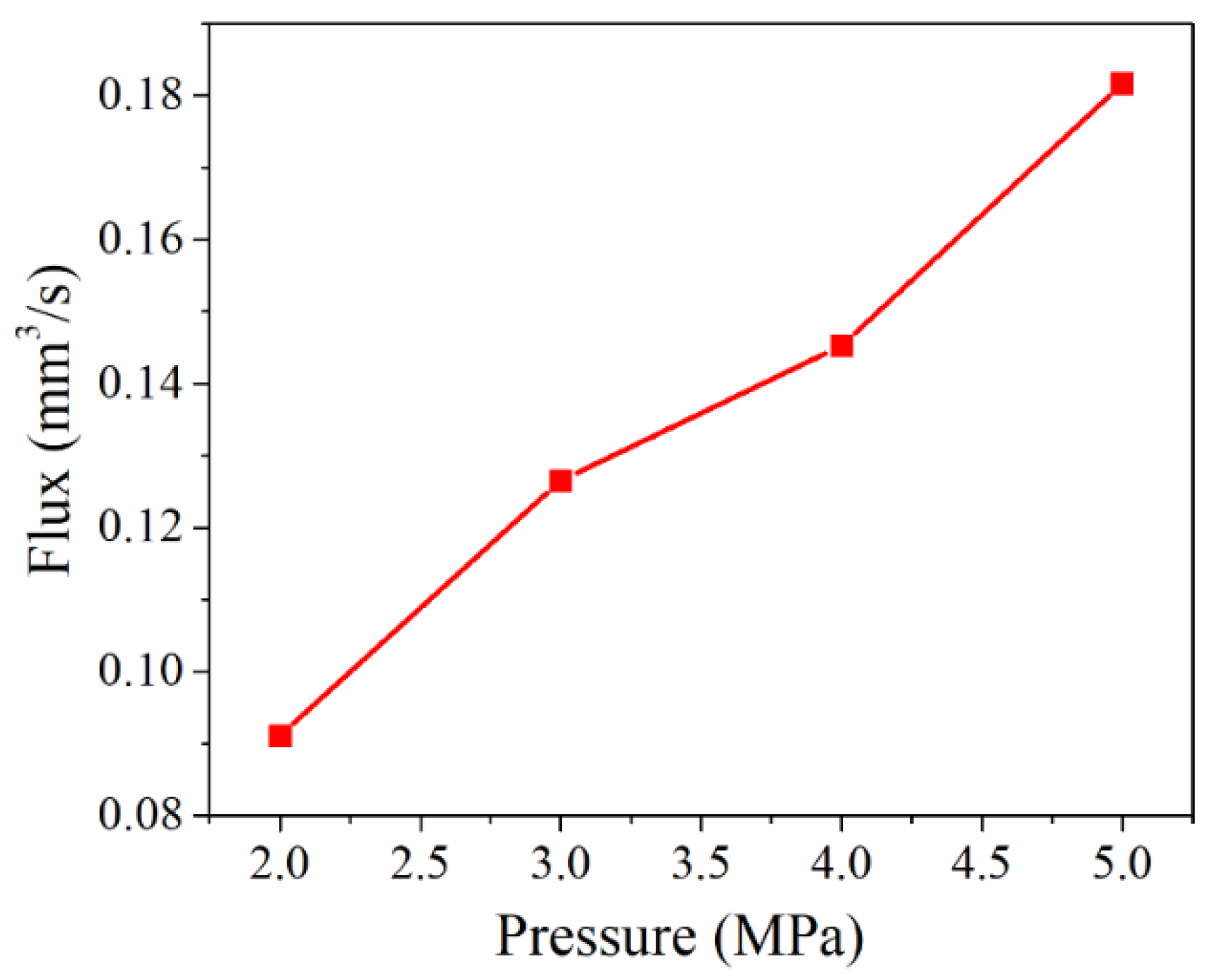

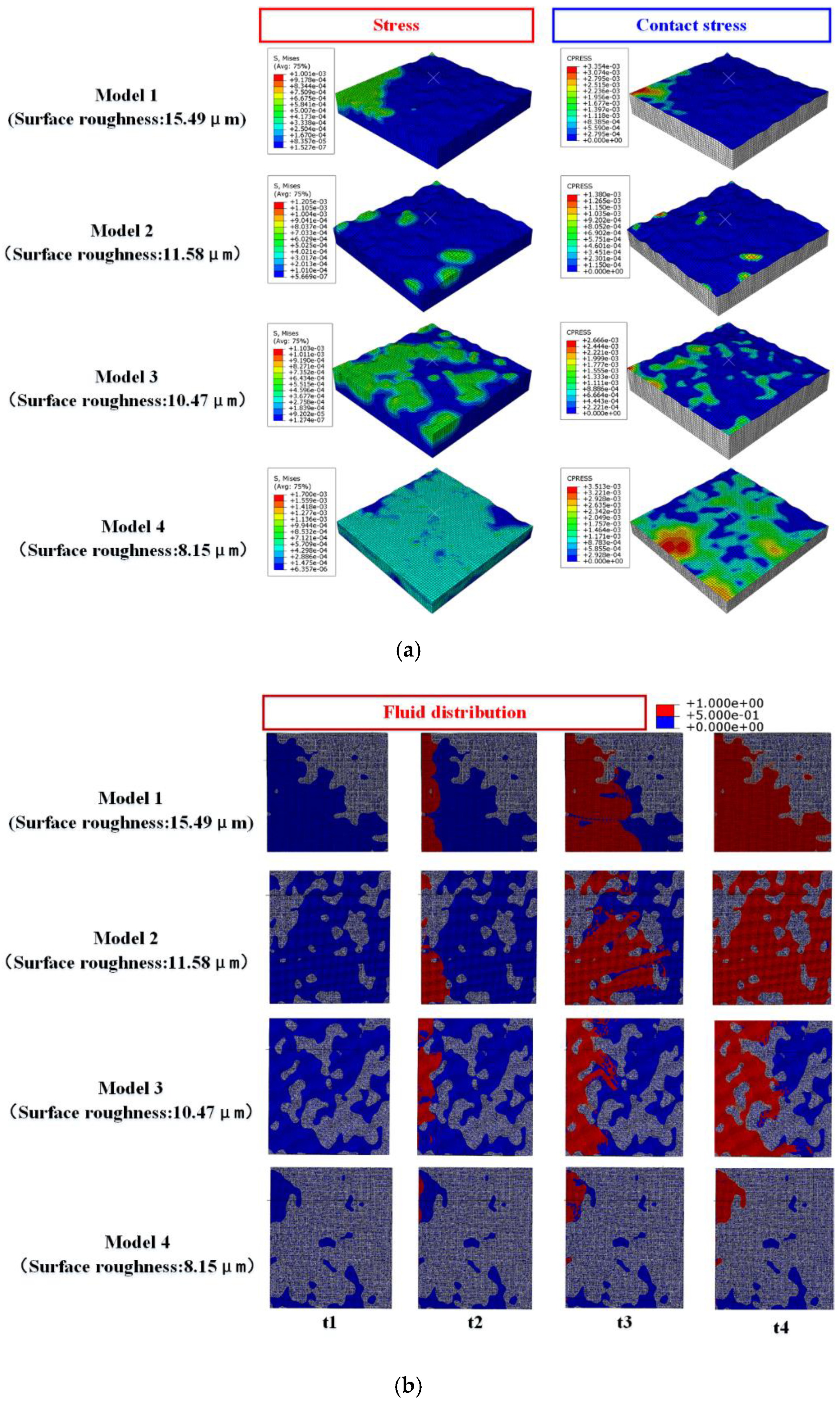
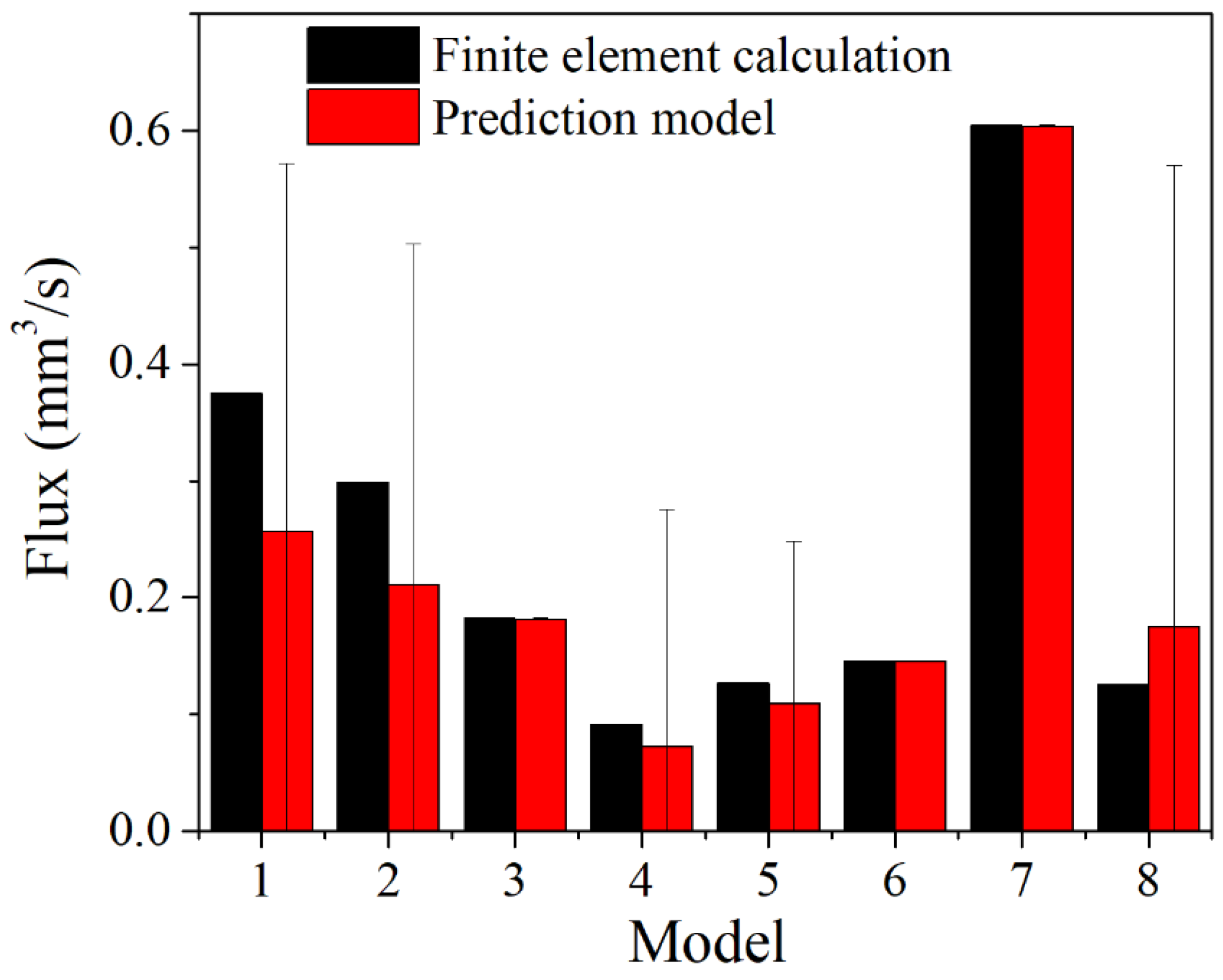
| Physical Quantities | Parameter Selection |
|---|---|
| Density/(g/cm3) | 6.45 |
| Young’s modulus of pure martensite/GPa | 45 |
| Young’s modulus of pure austenite/GPa | 61 |
| Poisson’s ratio | 0.33 |
| Martensite influence coefficient (MPa/K) | 15.8 |
| Austenite influence coefficient (MPa/K) | 15.8 |
| Maximum residual strain | 0.023 |
| Plastic limit/MPa (120 °C) | 521 |
| Plastic limit/MPa (20 °C) | 618 |
| Physical Quantities | Parameter Selection |
|---|---|
| Density (kg/μm3) | 1.138 × 10−18 |
| Critical speed (μm/s) | 4.2081 × 108 |
| Kinematic viscosity (N·s/μm2) | 1.1663 × 10−11 |
| Number | Medium Internal Pressure/MPa | Inner Diameter of Sealing Surface/mm | Outer Diameter of Sealing Surface/mm | Roughness/μm | Contact Stress/MPa | Leakage Rate/mm3/s |
|---|---|---|---|---|---|---|
| 1 | 5 | 100.69 | 100.99 | 11 | 21.0352 | 0.3752 |
| 2 | 5 | 100.69 | 100.99 | 11 | 161.682 | 0.2981 |
| 3 | 5 | 100.69 | 100.99 | 11 | 489.48 | 0.1817 |
| 4 | 2 | 100.69 | 100.99 | 11 | 489.48 | 0.09111 |
| 5 | 3 | 100.69 | 100.99 | 11 | 489.48 | 0.12653 |
| 6 | 4 | 100.69 | 100.99 | 11 | 489.48 | 0.14527 |
| 7 | 5 | 100.69 | 100.99 | 15.48716 | 130.14 | 0.60428 |
| 8 | 5 | 100.69 | 100.99 | 10.47273 | 223.372 | 0.12555 |
Publisher’s Note: MDPI stays neutral with regard to jurisdictional claims in published maps and institutional affiliations. |
© 2022 by the authors. Licensee MDPI, Basel, Switzerland. This article is an open access article distributed under the terms and conditions of the Creative Commons Attribution (CC BY) license (https://creativecommons.org/licenses/by/4.0/).
Share and Cite
Zhu, L.; Liu, Y.; Li, M.; Lu, X.; Zhu, X. Calculation Model of Mechanical and Sealing Properties of NiTi Alloy Corrugated Gaskets under Shape Memory Effect and Hyperelastic Coupling: Two Sealing Properties. Materials 2022, 15, 4659. https://doi.org/10.3390/ma15134659
Zhu L, Liu Y, Li M, Lu X, Zhu X. Calculation Model of Mechanical and Sealing Properties of NiTi Alloy Corrugated Gaskets under Shape Memory Effect and Hyperelastic Coupling: Two Sealing Properties. Materials. 2022; 15(13):4659. https://doi.org/10.3390/ma15134659
Chicago/Turabian StyleZhu, Lingxue, Yang Liu, Mingxuan Li, Xiaofeng Lu, and Xiaolei Zhu. 2022. "Calculation Model of Mechanical and Sealing Properties of NiTi Alloy Corrugated Gaskets under Shape Memory Effect and Hyperelastic Coupling: Two Sealing Properties" Materials 15, no. 13: 4659. https://doi.org/10.3390/ma15134659





